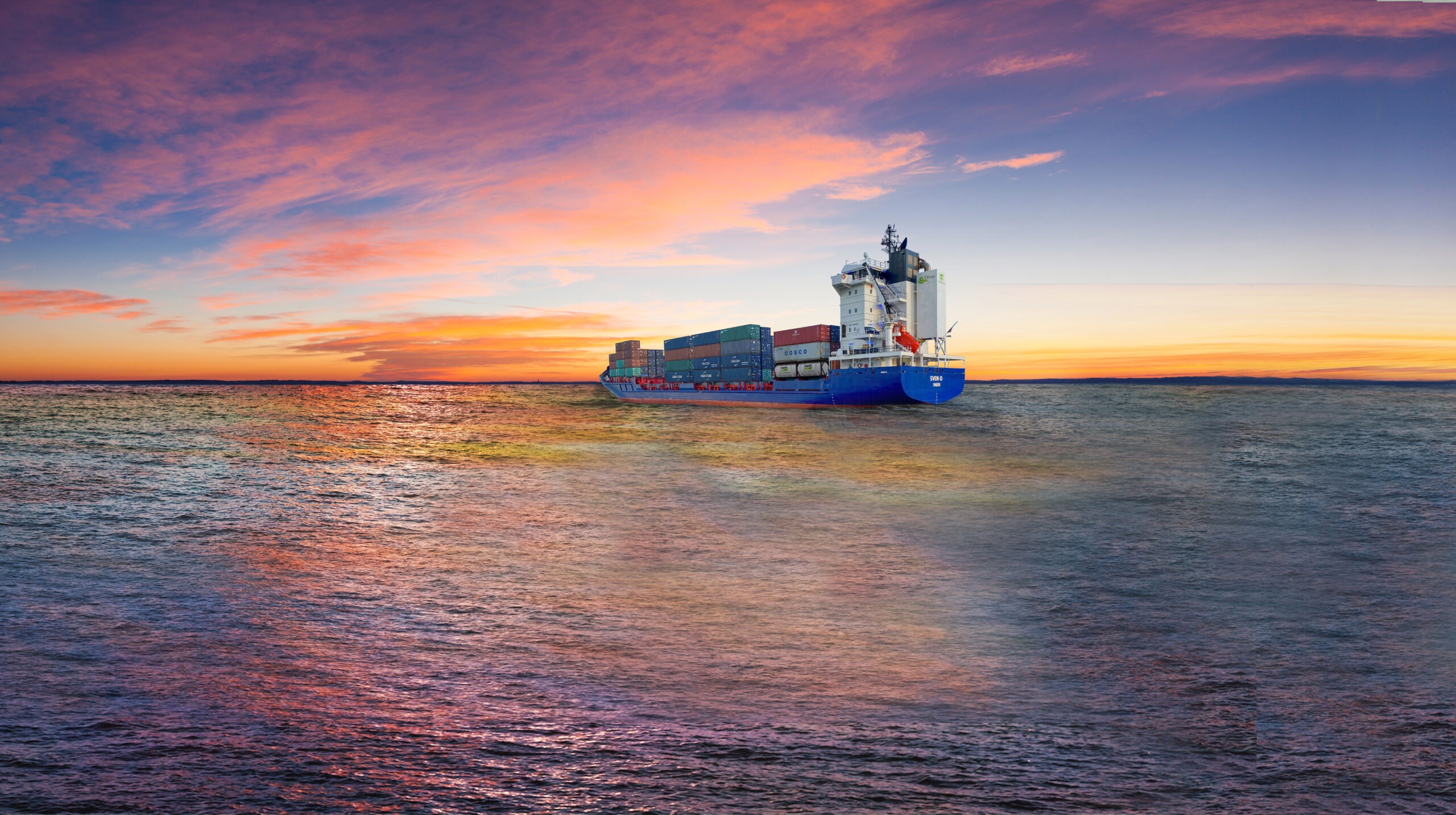
The Rotterdam-based Value Maritime claims to be the first in the world to be able to capture and store CO2 while at sea. Early October, the ship Nordica will be the first to use this new sustainable technology. The capability to capture and store up to 100 % CO2 is modelled on an existing filter system for sulphur oxides and particulate matter.
Value Maritime (located in the old western port area of the Maasstad – as Rotterdam is sometimes called in a reference to the Maas river – is a site that now welcomes innovative companies) is addressing the increasingly stringent requirements for shipping. Spokesperson Yvette van der Sommen: “In 2020, you could see that the restrictive regulations for sulphur emissions came quite unexpectedly for the shipping industry, which is a fairly traditional one. And the environmental regulations are only set to get stricter.”
Initially, Value Maritime focused on the reduction of sulfur and particulate matter in shipping. Ships worldwide are only allowed to use fuel with up to 0.5 percent sulfur as from 2020. “The capture and storage of CO2 is now possible in a module that can be added to ships. Getting that CO2 out is not possible until the emissions have been purified and cooled down first.”
Patented technology
Van der Sommen cannot go into detail about this innovation because it is patented. The filter system -varying in size depending on the ship’s power rating- is connected to the ship’s exhaust. This approach comprises two elements.
The first element is a small prefabricated, pre-installed ‘plug and play’ scrubber system in a transport-friendly housing. This system filters the sulfur and 99 percent of the particulate matter out of ship emissions. Since recently, it is also capable of capturing CO2.

“Before CO2 can be extracted from gas, it is important that the gas is cleaned up first. This information is well known in the industry, so there is no patent on it. Our filter system, the Filtree, actually cleans up the exhaust gases and this allows the gases to then be stripped of CO2.”
In addition, this filter system has a filter that cleans the wash water. In shipping, wash water is waste water from washing, for example, a cargo hold or a gangway. Oil and particulate matter are removed from this water and discharged into a sludge tank.
“The CO2 is loaded into a battery. We call this storage capacity a battery because it is loaded with CO2 and then discharged. That battery can be reused afterwards. So, this works in a very circular way.”
Supplying CO2 to greenhouse horticulture
Van der Sommen goes on to explain how things work in practice in Rotterdam. “The battery is discharged in the port. The CO2 is then transported by truck in a tank to greenhouse horticulture companies in the Westland who can then use it to grow crops. When the battery is empty, it is brought back again for another sailing route.”
Value Maritime has had nothing to complain about in terms of attracting interest. Since the possibility of using CO2 became known, the telephone has been ringing off the hook. The main people calling are interested captains and shipping companies. Plus, we also know that greenhouse growers are very interested too. They will pay for it, it is a raw material for them. It is a commercial product, without the need for a subsidy.”
Twelve ships are currently using the filter system, which can subsequently be expanded with the CO2 module, and there are five orders for deliveries. The latter includes customer Visser Shipping for the innovative extension on the Nordica (1,040 teu = 20 feet standard container).
Starting in Rotterdam
The modified filter system will only succeed if, in addition to attracting enough interest, there are also the right facilities and no restrictions in terms of technology. In principle, such a system is suitable for any ship, but we are initially aiming for ships with a maximum power output of 15 megawatts.”
Value Maritime wants to start out small and then grow. “For now, it is easier to do routes like the Netherlands to Germany and Norway. This is why we are also starting with container feeders, which take over cargo loads from smaller ports.”
And it calls for not only customers but also the right infrastructure. “In the case of Rotterdam, it can now be done at the Short Sea Terminals. We can expand that with Bremerhaven and Hamburg in Germany and we are looking at more locations.”
The ability to store CO2 has to do with the route and space. A tank is 20 feet in size. “The choice is up to the owner how much they want to store; for example, 20 %, but it could be up to 100 % as well.”
The inventors of the filter system

The inventors of the filter system that includes CO2 storage are Christiaan Nijst and Maarten Lodewijks. The two complement each other extremely well. Van der Sommen: “Christiaan has a technical background, comes from the petrochemical industry and therefore knows everything about the type of processes that are involved. Maarten is someone from the shipping world. He really knows what’s going on there.”
There are many developments in the reduction of greenhouse gases. Value Maritime is well aware of that.
“It’s hard to figure out where the market is going. How fast is the use of environmentally friendly hydrogen as a fuel progressing? We hope to serve a large share of the market in the medium term. We might be faster than the competition because they are often much larger, with more complex operations. With our small, innovative company, we are able to enter the market very quickly. It is not overly bureaucratic, which is a real advantage.”
Finance-wise, Yard Energy, among others, has put money into the innovative start-up from 2017.
Also read: How shipping will become greener


